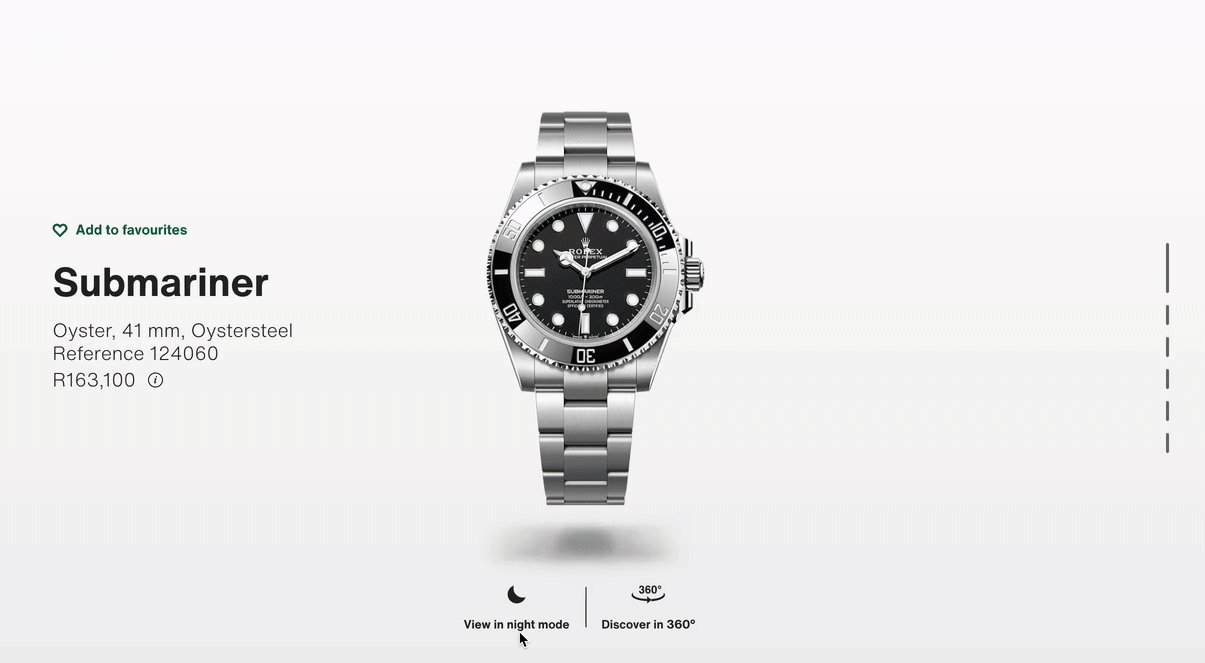&w=3840&q=75)
GUCCI LIVE allows customers to explore a collection with a client advisor online. — Image Credit: GUCCI

Credit: ALTAVA GROUP
The enduring success of luxury lies in its mastery of three principles: operating within implicit mandates, creating exclusive worlds with products for the few but stories for the many, and purposefully aligning with—or challenging—cultural norms.
Fast forward to today’s hyper-connected world, paired with hyperconscious and digitally-reliant consumers. Luxury brands nowadays face a new set of challenges:
&w=3840&q=75)
GUCCI LIVE allows customers to explore a collection with a client advisor online. — Image Credit: GUCCI
Luxury brands are renowned for their exceptional customer service and personal touch. Replicating this in-store personal experience in an online environment is challenging, yet some luxury brands are innovating in this space.
For instance, GUCCI LIVE allows customers to explore a collection with a client advisor from the comfort of their homes. Similarly, IWC offers an online concierge service for their luxury watches, helping to ease hesitations associated with online purchases. While these measures are commendable, they represent the beginning of a personalization journey rather than a holistic implementation, which should include relationship management, recalling past interactions, and adapting recommendations.
Data collection, when used indiscriminately, can lead to costly 'data landfill' storage and disappoint customers when their previously provided information is overlooked in subsequent interactions. However, data is the cornerstone of digital relationships, so gathering it ethically and thoughtfully is crucial for businesses that see personalization as a growth driver.
It’s important for luxury brands to design their data experiences (DX) in tandem with their customer (CX) and user experiences (UX), determining which data is valuable and how it can be integrated into personal relationships.
As consumer AI interfaces become more prevalent, brands should explore how they can leverage their existing data to enhance customer satisfaction. Imagine if an auction house’s art bidding index offered users buying and selling strategies, or consider the possibility of Tiffany rewarding its most engaged members, both online and offline, with early access to high-heat collaborations like Nike x Tiffany.
&w=3840&q=75)
While adopting new technologies can showcase a brand's commitment to innovation, and immersive experiences are often linked with luxury, novelty alone is insufficient to convey quality online. For instance, a metaverse activation might effectively capture Balmain's creative bravery, yet it may not be the best fit for demonstrating the craftsmanship of a luxury furniture maker.
AI recommendations might efficiently help Bottega Veneta customers find products that suit their style, but this approach might not satisfy the specific needs of discerning socialites seeking exclusive luxury retreats. This underscores the need for luxury brands to tailor their technological applications to align with their distinct quality. Similarly, the traction of tech novelty should not be mistaken for genuine brand attachment.
While advanced technology can enhance the user experience, it doesn't always correlate with a perceived increase in quality from the consumer's perspective. It's vital for brands to critically assess the actual return on investment when implementing complex technology, particularly when aiming to foster brand loyalty or enhance quality perception.
A more thoughtful strategy would involve luxury brands first identifying which aspects of their quality have not yet been effectively translated online, before diving into the capabilities of AI or the metaverse. The insights gained from this evaluation can lead to fit-for-purpose technology solutions.

Rolex’s day/night feature on their website, which vividly illustrates the design philosophy of their watches. Image Credit: Rolex
Are you grappling with challenges in conveying size details? Augmented Reality (AR) could be the solution. Do your customers crave the physical touch experience? High-fidelity 3D interaction might bridge this gap.
A simpler, yet effective example is Rolex's on their website, which vividly illustrates the design philosophy of their watches — crafted for both daytime and nighttime exploration. It demonstrates how contextually appropriate technology use can effectively show a brand's intention, thereby enhancing the perception of quality.
&w=3840&q=75)
Using a statement product as a connector for many brand worlds. Image Credit: Viktor&Rolf, @noonoouri, Vogue.
World-building is crucial for branding—luxury, or otherwise—, as it unifies all brand assets within a cohesive narrative that is neither linear nor finite. By crafting a unique world, a brand ensures each touchpoint is distinctive yet maintains overall cohesion.
This is particularly vital in luxury branding, where allure often stems from an 'outsider's' desire for inclusion. World-building in this context extends beyond brand recognition; it's about creating perceived value.
A common mistake, however, is constraining world-building to fit within channel-specific best practices. This often leads to a disconnect between the avant-garde, expressive nature of luxury physical runways and the sterile experience of eCommerce, diluting the brand universe.
Understanding the nature of each channel is important, but it’s essential to view them not as separate worlds, but as chapters of the same brand story. Start by articulating your underlying concept. Then, explore how the unique features of each channel, such as TikTok, your website, and physical retail, can enhance your brand story without diluting its core message.
&w=3840&q=75)
Cohesive, thematic, storytelling world-building. Image Credit: FILA Explore & Your Majesty
For instance, when FILA launched its EXPLORE collection, the story of urban explorers served as the unifying theme. This concept was brought to life with a retail experience that invited visitors to explore the four physical rooms of the EXPLORE collection. The online shop complemented this with an interactive experience, allowing users to delve into the products, featuring unique visual effects, looks, and stories from the communities in each world.
&w=3840&q=75)
Cohesive, thematic, storytelling world-building. Image Credit: Loewe, Creative Boom
Similarly, Loewe’s launch of their Studio Ghibli collection followed a one-world, multichannel approach. They utilized social media for snackable content, while the extended story was made available on their microsite, interwoven with products. This strategy created a progressively unfolding world of Loewe x Studio Ghibli, guiding customers from initial awareness to conversion and retention, always fresh yet cohesive.
Luxury brands operate under a unique set of principles, often described as the Luxury Anti-Law of Marketing, which posits that making products difficult to acquire enhances their exclusivity and desirability. This concept, while readily applied in physical boutiques, presents challenges online, where exclusivity must be balanced with accessibility.
Brands like Chanel have circumvented this by adopting an invitation-only approach or by requiring customers to contact an advisor to make a purchase, echoing Sotheby’s methodology for their private collections.
However, while it is vital for luxury brands to maintain product exclusivity, they should be cautious not to withhold excessive practical and inspirational information online. A lack of comprehensive product details, precise measurements, or appropriate "for scale" visuals can unintentionally suggest inferior quality.
When discussing strategic priorities amidst declining sales, Kering Deputy CEO Jean-Marc Duplaix emphasized the importance of luxury brand building among all consumers for long-term success: “It is essential that there should be many more people familiar with the brand than those who can afford to buy it for themselves.”
In today's culture of open access, poorly executed information withholding can be perceived as outdated tactics to artificially inflate value. Luxury brands stand to benefit greatly from broadening insight into their world, sharing their stories with wider audiences, and even spotlighting many of them.
Exclusivity can be introduced in the second layer of the customer journey through methods like restricted access to advanced product customization, waitlists, or linking access to a loyalty program.
&w=3840&q=75)
EQL is an eCommerce solution that rewards fans with access to high-demand products. Image Credits: EQL, Crocs
This strategy can be seamlessly blended with personalization by encouraging users to create accounts and join a membership program offering rewards. This method creates a members-only environment without appearing elitist.
Furthermore, by harnessing the voices of members to share the brand's story on more 'commodified' content platforms like TikTok, brands can participate in the conversation indirectly, maintaining their prestigious allure.
Luxury brands have traditionally believed that the emotional connection fostered by their marketing activities should primarily be between the brand and the consumer. This thinking is baked into how marketing effectiveness is measured with metrics like brand affinity or brand attachment.
While these metrics are effective KPIs, they shouldn’t dictate how a brand fosters emotional connection. Today’s consumers see brands as corporations with responsibilities, and the brands that are loved are those who successfully facilitate connection—in varying capacities—between their customers.
Luxury brands need to realign their strategies to more effectively identify their communities and facilitate connections that extend beyond their products, tapping into shared cultural and social identities.
"It’s not for you, it’s for everyone." —Telfar
An example is Telfar, an accessible luxury fashion brand that has gained prominence not just through its creator or product quality but by forging a strong emotional connection with a specific fan base: Black—and queer—creatives who have historically been overlooked in the luxury market.
&w=3840&q=75)
Telfar TV is a community-sourced channel showcasing the lives and emotions of Telfar fans. Image Credit: Telfar
Telfar’s brand activities often adopt a humorous tone, removing any ego-centric brand image to wedge themselves between heroes of the communities they serve. The brand's success led to products selling out within seconds, inadvertently driving up resale values.
In response, Telfar launched Telfar TV, a community-sourced channel showcasing the lives and emotions of Telfar fans. The channel features random flashes of QR codes that lead viewers to the product drop shopping page. Here, the emotional leverage is intelligently paired with Drip strategy, ensuring that those passionate about the brand are among the first to access new products.
In a similar vein, EQL, an e-commerce solution that powers hype launches for brands like Crocs or Tiffany (mentioned above), is advancing with its innovative EQLizer technology. This technology, a blend of past commerce analysis and fan insights, is designed to ensure that the most sought-after products reach genuine fans, not bots.
This convergence of fan-first technology and a community-first zeitgeist signals a new chapter in emotional engagement through brand building; one where brands take a back seat, bringing fans together and elevating their experiences.
Digital innovation isn’t a choice for luxury brands—despite any with decades of prestige—it’s an essential factor when considering opportunities to scale, stay relevant with future generations, and maintain exclusivity. The technology is available to fuel a breadth of opportunities, and these five we’ve explored are just the beginning.
Luxury brands nowadays face a new set of challenges: competing for attention in the popular—yet commodified—content arena while maintaining their prestige, conveying quality, ensuring exclusivity without obscurity, and a multitude of other pressing factors.
We delve into the pitfalls brands encounter when digitizing luxury’s five key attributes: personalization, quality, world-building, quality, and emotional connection. We offer opportunities concerning each pitfall, providing starting points for brands aiming to expand through digital innovation without diluting their esteemed heritage or the allure of exclusivity.